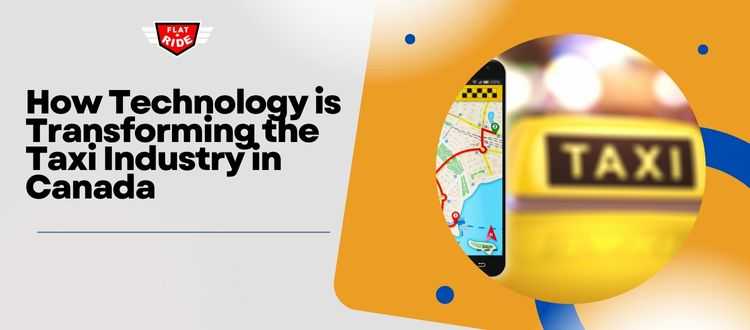The taxi industry in Canada, much like the rest of the world, has undergone significant changes in recent years. Technological advancements have played a crucial role in reshaping how taxi services operate, enhancing both efficiency and customer satisfaction. This article explores the various ways technology is transforming the taxi industry in Canada.
The Rise of Mobile Apps
- Booking and Tracking:
- Convenience: Mobile apps allow passengers to book a taxi with just a few taps on their smartphones.
- Real-Time Tracking: Passengers can track the location of their taxi in real-time, reducing wait times and improving reliability.
- Payment Options: Apps offer multiple payment options, including credit cards, debit cards, and digital wallets.
- User-Friendly Interfaces:
- Easy Navigation: Intuitive interfaces make it simple for users to book a ride, select vehicle types, and manage their profiles.
- Feedback Systems: Passengers can rate their experience and provide feedback directly through the app, ensuring continuous service improvement.
Enhanced Safety Features
- Driver Background Checks:
- Verification: Technology enables thorough background checks and verification processes for drivers, ensuring passenger safety.
- Training Programs: Online training programs help drivers improve their skills and knowledge about safety protocols.
- GPS and Navigation:
- Accurate Routes: GPS technology ensures drivers take the most efficient routes, avoiding traffic and reducing travel time.
- Emergency Features: Panic buttons and emergency contact options within apps provide an added layer of security for passengers.
Improved Fleet Management
- Vehicle Maintenance:
- Scheduled Maintenance: Technology helps in scheduling regular maintenance checks, ensuring that taxis are always in top condition.
- Diagnostic Tools: Advanced diagnostic tools detect potential issues before they become major problems, reducing downtime.
- Fuel Efficiency:
- Route Optimization: GPS and route optimization software help in planning the most fuel-efficient routes.
- Hybrid and Electric Vehicles: The adoption of hybrid and electric vehicles is facilitated by technological advancements, reducing the environmental impact.
Digital Payment Systems
- Cashless Transactions:
- Convenience: Digital payment options eliminate the need for cash, making transactions quicker and safer.
- Record Keeping: Automatic generation of receipts and transaction records helps in maintaining accurate financial records.
- Contactless Payments:
- Hygiene: Especially important during the COVID-19 pandemic, contactless payment methods reduce physical contact, enhancing safety.
- Speed: Contactless payments are quicker, reducing the time spent at the end of a ride.
Data Analytics and Artificial Intelligence
- Predictive Analytics:
- Demand Forecasting: Data analytics helps in predicting demand patterns, allowing taxi companies to deploy resources more efficiently.
- Customer Preferences: Analysis of customer data helps in understanding preferences and improving service offerings.
- Artificial Intelligence:
- Chatbots: AI-powered chatbots provide 24/7 customer support, handling queries and booking requests efficiently.
- Dynamic Pricing: AI algorithms enable dynamic pricing models, adjusting fares based on demand and supply conditions.
The Role of IoT in the Taxi Industry
- Fleet Monitoring:
- Real-Time Data: IoT devices provide real-time data on vehicle location, speed, and condition.
- Preventive Maintenance: IoT sensors monitor vehicle health, alerting for preventive maintenance to avoid breakdowns.
- Enhanced Connectivity:
- Passenger Experience: In-car Wi-Fi and infotainment systems improve the passenger experience, making rides more enjoyable.
- Driver Assistance: IoT devices assist drivers with navigation, traffic updates, and communication with dispatch centers.
Eco-Friendly Innovations
- Electric Taxis:
- Sustainability: The introduction of electric taxis reduces carbon emissions and promotes sustainable transportation.
- Cost Savings: Lower fuel costs and maintenance expenses make electric taxis economically viable.
- Green Technologies:
- Solar Panels: Some taxis are equipped with solar panels to power auxiliary functions, reducing reliance on traditional energy sources.
- Eco-Driving Programs: Technology-driven programs train drivers on eco-friendly driving practices, further reducing environmental impact.
Customer-Centric Features
- Personalized Services:
- Tailored Experiences: Customer data enables personalized services, such as preferred routes, music choices, and vehicle types.
- Loyalty Programs: Digital platforms facilitate loyalty programs, rewarding frequent users with discounts and special offers.
- Accessibility:
- Inclusive Services: Technology helps in providing services for passengers with disabilities, such as wheelchair-accessible vehicles and voice-activated booking systems.
Future Trends
- Autonomous Taxis:
- Innovation: Self-driving taxis are on the horizon, promising to revolutionize the industry by reducing labor costs and improving safety.
- Challenges: Regulatory and technical challenges need to be addressed before widespread adoption.
- Blockchain Technology:
- Transparency: Blockchain can enhance transparency in transactions, ensuring secure and tamper-proof records.
- Smart Contracts: Automated smart contracts can streamline operations, reducing administrative overhead.
Conclusion
Technology is undoubtedly transforming the taxi industry in Canada, making it more efficient, safe, and customer-friendly. From mobile apps and digital payment systems to AI and IoT, these advancements are revolutionizing how taxi services operate. As the industry continues to evolve, embracing these technologies will be crucial for taxi companies to stay competitive and meet the growing demands of modern passengers.
For more information and to book your next ride, visit Fort Saskatchewan Taxi.
Download Our App: Android Version & ios Version
Connect with us

